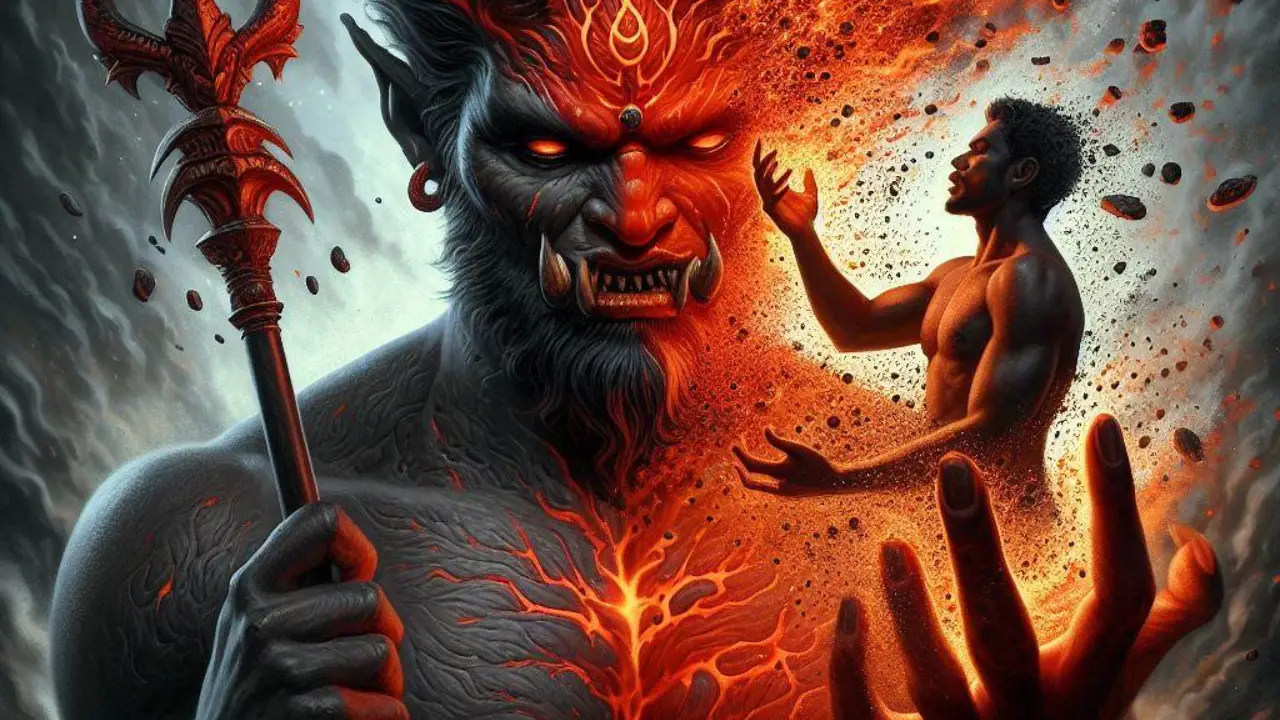Myths, woven into the fabric of cultures worldwide, often carry profound meanings and life lessons. Among these, the legend of Bhasmasura from Hindu mythology stands as a striking example. This narrative delves deep into themes of power, arrogance, and the ultimate consequences of one’s actions.
The Beginning: Bhasmasura’s Quest for Power
Bhasmasura’s story starts with his intense devotion to Lord Shiva, the deity of destruction and transformation in Hindu mythology. Through severe penance, Bhasmasura aims to gain a boon from Shiva. This early part of the tale sets the stage, teaching us the first lesson: Be mindful of what you wish for.
When Shiva appears, pleased by Bhasmasura’s devotion, he offers a boon. Bhasmasura asks for the power to turn anyone he touches on the head into ash. Shiva grants this wish, unknowingly sowing the seeds of future turmoil. The boon, at its core, symbolizes the double-edged nature of desires and ambitions.
Bhasmasura’s Reign of Terror
Empowered by Shiva’s boon, Bhasmasura’s true nature comes to the forefront. He begins to abuse his newfound power, causing widespread fear. This segment of the story illustrates the corrupting influence of power when unchecked by wisdom or moral considerations. This theme echoes in the stories of various historical figures whose moral compasses faltered under the weight of their power.
Divine Strategy: The Entry of Lord Vishnu
The gods, witnessing Bhasmasura’s tyranny, realize the need for intervention. Lord Vishnu, the preserver and upholder of order, assumes the form of Mohini. As a beautiful and enchanting woman, Mohini captivates Bhasmasura. Here, the story introduces a new dimension: the blinding effect of obsession and desire.
Mohini’s condition for marrying Bhasmasura is simple yet cunning. He must follow her in a dance, mimicking her every move. The dance sequence in the story is symbolic, representing the dance of life and the consequences of our actions.
The Downfall of Bhasmasura
The story reaches its climax as Bhasmasura, completely absorbed in Mohini’s dance, forgets his own dangerous power. When Mohini places her hand on her head, Bhasmasura, in his eagerness to imitate her, does the same. He turns to ash the instant he touches his head. This moment is a powerful allegory for self-inflicted downfall, emphasizing the importance of self-awareness and caution in our actions.
The Everlasting Lessons from Bhasmasura’s Tale
The myth of Bhasmasura transcends its ancient origins, reflecting timeless human behaviors and societal dynamics. It is a narrative about the balance between ambition and humility, power and wisdom, desire and consequence. In our daily lives, we often encounter moments where the choices we make, especially those concerning the use of power or the pursuit of desires, can have far-reaching consequences. The story serves as a reminder to tread these paths with awareness and ethical consideration.
This myth, like many others, is open to interpretation and offers multiple layers of understanding. How does the story of Bhasmasura resonate with you? Do you see reflections of its themes in the modern world? I invite you to share your thoughts, interpretations, or even personal anecdotes that connect with this ancient tale. Let’s engage in a meaningful discussion in the comments below and explore the diverse perspectives and insights this myth can offer.

